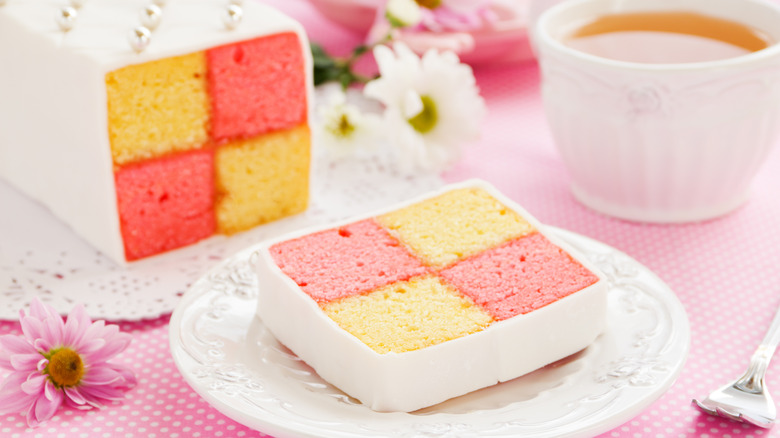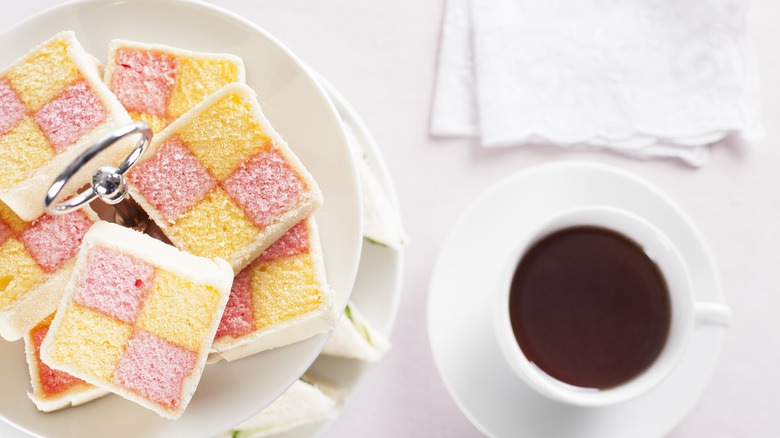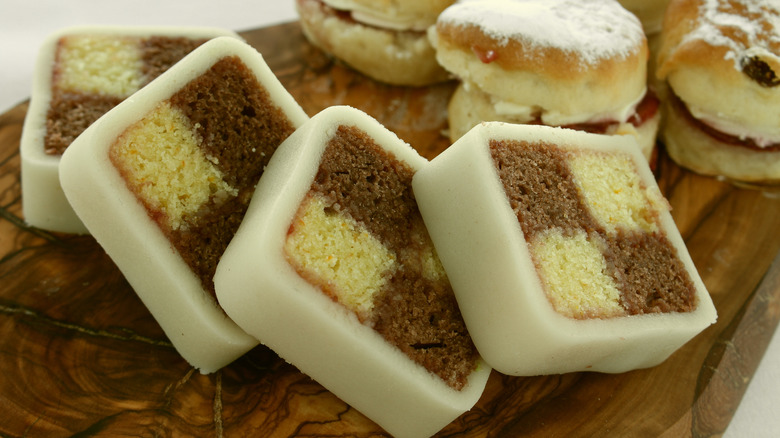The Royal Wedding Battenberg Cake Was Created For
Many of the cakes and puddings you'll find in British cookbooks today can be linked in one way or another to the Royal Family. At the beginning of the year, a Lemon Swiss roll and amaretti trifle was crowned The Platinum Pudding in honor of the late Queen Elizabeth II's Platinum Jubilee, per the Royal Family. Before that, there was Poulet Reine Elizabeth, also known as the coronation chicken, which marked the late queen's ascension to the throne in 1953 (via The Conversation). Keep in mind, other treats and goodies were named for a variety of monarchs, including the Victoria Sponge for Queen Victoria, Queen Anne's pudding, King William's posset, as well as Queen's pudding, which later became known as apple Charlotte.
Another dessert that claims to have royal connections is the Battenberg Cake which, like many dishes that started out as something fit for a monarch, is widely enjoyed in Britain today, according to British Food and Travel. The cake is a colorful concoction made with small square logs of pink and yellow sponge cake so it looks like a colorful chessboard. It's typically held together with a layer of jam before it is blanketed by a layer of marzipan. The cake, also referred to as Domino Cake, Neapolitan Roll, or Church Window Cake, was said to have been invented to mark the wedding of Queen Victoria's granddaughter to Louis of Battenberg in 1884. The story is charming in and of itself, but how'd it originate?
The origin of the Battenberg cake
While Battenberg cake is said to be associated with the wedding of Princess Victoria to Louis of Battenberg, the first recipe for Battenberg cake wasn't actually released into the public domain until 1898, more than a decade after the wedding took place (per Food History Jottings). In fact, the recipe appeared in a book called "Saleable Shop Goods" and was written by baker Frederick Vine. During that time, he was well-known as a professional baker, author of several books, and editor of The British Baker.
However, Vine's version of the Battenberg cake didn't look like the cake we know today. It actually looked like one end of a Rubik's cube and was made with a total of nine two-toned squares assembled in rows of three. It is likely that other, similarly-styled cakes existed during this period, which could also explain why so many names exist for this beloved pastry.
Battenberg cakes can be made in different ways
Nowadays, just about every Battenberg cake you'll find is made nearly exactly the same way: with sponge cake that comes in two different colors, one plain and the other dyed pink, and both trimmed so that they are the same size and can be stacked (per BBC Good Food). The pieces are then brushed with apricot jam so that they stick together before a sheet of marzipan is used to bind the cake together.
It may be untraditional, but Britain's most popular bakers have been known to play with the Battenberg cake's traditional pink and white colors. In fact, British celebrity chef and "Great British Bake Off" judge, Prue Leith, jazzed up the cake to give it a vibrant orange and black checkerboard look, according to The Great British Bake Off. She also dyed the marzipan a bright orange for a showstopping dessert. On the other hand, British baking queen Mary Berry's version of Battenberg cake is more traditional, however, she makes use of nine panes instead of four, per ABC.


